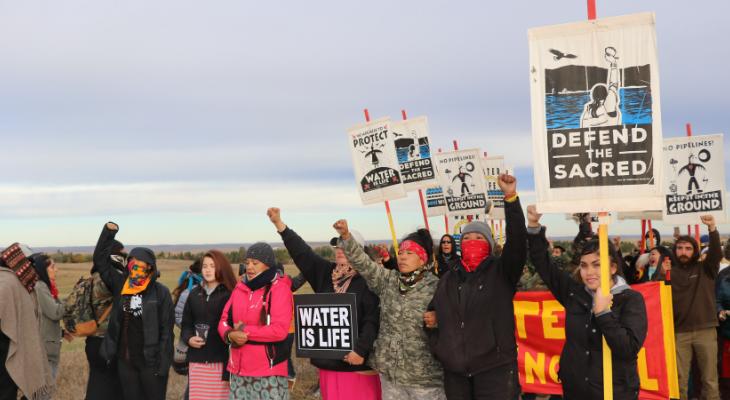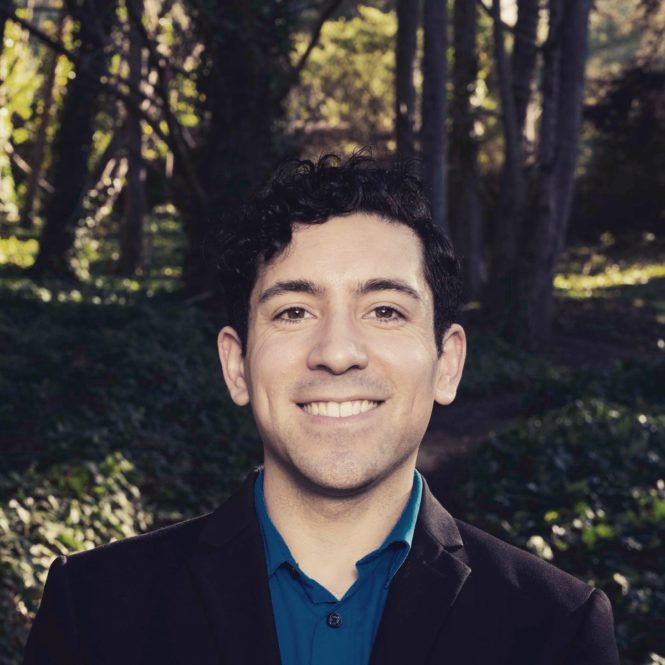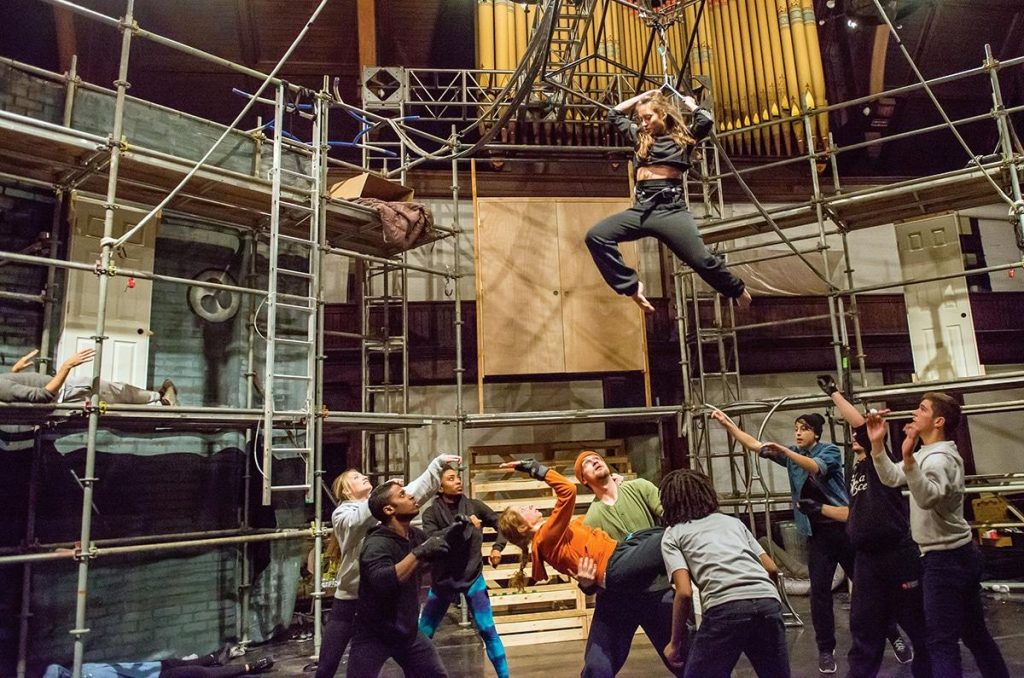How Indigenous Religions Can Widen the Interfaith Circle
October 8, 2021

In recognition of Indigenous Peoples Day on Monday, Interfaith America managing editor Monique Parsons spoke with Abel Gomez, Andrew W. Mellon Post-Doctoral Fellow in Native American Studies at the University of Oklahoma, about contemporary Indigenous religious practices and the role of interfaith leaders in and around Indigenous communities.
Parsons reached out via Zoom from Chicago, which is located on the lands of Council of the Three Fires — comprised of the Ojibwe, Odawa, and Potawatomi Nations — as well as the Miami, Ho-Chunk, Menominee, Sac, Fox, Kickapoo, and Illinois Nations. Gomez spoke from within the traditional lands of the Caddo Nation and Wichita and Affiliated Tribes in the area now known as Oklahoma City.
You can listen to an audio portion of the interview here.
Share
Related Articles
Higher Education
What Does Interfaith Engagement Mean from an Evangelical Perspective?
American Civic Life
American Civic Life
Related Audio

Interfaith America: Can you tell us about your area of study and what inspired you to focus on this for your academic career?
Dr. Abel Gomez: My research looks at the intersection of Indigenous religions, political movements, sacred sites protection movements, gender and sexuality and decolonization. My doctoral degree is in the academic study of religion with a focus on contemporary Native traditions, and more specifically I did my dissertation research on efforts to protect sacred places within the San Francisco/Monterey Bay region which is the territory known collectively today as Ohlone.
My maternal grandparents are from Nicaragua and El Salvador; my father was born in Mexico. I grew up in the San Francisco Bay Area and went to San Francisco State University, where I was involved in Latino, Chicano and LGBT student organizations. During that time, I got to go to this place called Indian Canyon, which is the only federally recognized Indian Country, which is the legal term, between Sonoma and Santa Barbara. I met Ann Marie Sayers, an Ohlone elder, and it was the first time, as far as I knew, I’d met a Native person whose ancestors were from the area where I grew up. It opened up a lot of questions for me, including: what does it mean to be doing academic work and political organization work on Indigenous land, on colonized land? Later, in graduate school, Ohlone revitalization movements became the focus of my work.
IA: What do you think people should know about Indigenous religious traditions as they’re practiced today?
AG: Three words: relationship, responsibility and resurgence. So often Indigenous peoples understand themselves as living in a web of relationships – to other humans, to lands, to waters, and what are often called non-human relatives. This includes plant, animal life, but also various kinds of spiritual beings or creator beings. And those relationships always come with responsibility.
The third R, resurgence, is also really important, because historically, Indigenous peoples were understood by non-Native people to be disappearing, to eventually go extinct. Rather than disappearing in fact there has been an incredible resurgence globally of Native people relearning their languages, relearning their ceremonies and reasserting sovereignty over their traditional territory.
Often Native people fundamentally understand themselves as being from and of a place. In that place, often there’s a sense that that landscape is alive with sacred power.
Often Native people fundamentally understand themselves as being from and of a place. In that place, often there’s a sense that that landscape is alive with sacred power.
All this is really important for non-Native people to understand, because we see in various political movements happening right now, that Native peoples are on the front lines of protecting land and water, and these are not simply natural resources for most Native people but are understood through a fundamentally religious lens of religious obligations, of understanding the sacredness of land and water, of understanding what’s often called the sacred covenant between human beings, creator beings and these ancestral lands and water.
IA: How have Native peoples been included or excluded from interfaith conversations?
AG: Certainly, there is a major presence in international gatherings like the World Parliament of Religions, where Native leaders from around the globe speak about what is happening within their communities and the ongoing impacts of settler colonial occupation.
Also, one way I see interfaith engagement is in political movements. For example, there is a multi-year effort to protect an area in Berkeley known as the West Berkeley Shellmound, which is one of the oldest burial and village sites within the Bay Area. And part of the way that organizers have galvanized support is they’ve actively invited interfaith leaders to join their efforts in protecting this place. In that invitation, there has been a call for interfaith leaders to understand, “your own sacred places are important, your prayer practices are important, so we invite you to pray with us on our sacred site and be part of a reimagining of what this land might look like.”
South of that, the Amah Mutsun Tribal Band is working with environmental justice organizations to save land in the Santa Cruz mountains.
For Christian groups, this is an important opportunity to really think about how have the traditions that one is involved in actually contributed to Indigenous dispossession. The future is not set, right? All of these movements, whether we’re talking about Standing Rock, whether or efforts in Hawaii to resist the telescope on the sacred mountain Mauna Kea, or resistance to the pipeline Line 3, these are all moments where people can co-envision together the kind of future that we want.
IA: Is it common for people who practice Indigenous religions to also have another religious identity?
AG: There are many people who practice both and don’t necessarily see a conflict. Perhaps it might be best to describe it as a spectrum. There are some who will only practice their traditional ceremonial ways, or what they have access to in terms of traditional ceremony; there are others that are very Christian, are Catholic or Protestant, then there are many that practice a blend of those two. Among Lakota people there is a ceremony known as the Sun Dance, which is a ceremony in which individuals sacrifice pain and suffering for the wellbeing of their community and the earth. Some Lakota have interpreted Jesus as the ultimate Sun Dancer, for example.
IA: Do you see opportunities for people who practice Indigenous religion to take the lead in interfaith engagement?
AG: There is another important element about Native religions that I think is really important to discuss, which is that not all elements of these traditions are meant for public. Part of this resurgence also is about setting the terms about what is shared.
IA: Can you talk about sacred sites? This concept resonates with people of all faiths.
AG: It’s important to understand that different sacred sites have different meanings. Part of the reason it’s important to think about, especially in an interfaith context, is that historically Native traditions have been severely persecuted by the federal government. It wasn’t until 1978 with the American Indian Religious Freedom Act that Native people had the legal right to practice their ceremonies.
AG: It’s important to understand that different sacred sites have different meanings. Part of the reason it’s important to think about, especially in an interfaith context, is that historically Native traditions have been severely persecuted by the federal government. It wasn’t until 1978 with the American Indian Religious Freedom Act that Native people had the legal right to practice their ceremonies.
In my mind this is one of the most important and perhaps most challenging things to think about. If we’re talking about interfaith work and we want to expand the ability of communities to practice their religious ceremonies, what I ask my students is, if we think about the experience of Native people under the occupation of the United States, do they actually have religious freedom? If you cannot practice, if you cannot engage in the proper protocol with sacred lands and sacred beings, then you cannot necessarily always practice your religious traditions.
IA: What are some of the solutions you’re seeing around this fundamental tension?
AG: People are navigating this in different ways. One of the most brilliant things that I have noticed in the Bay Area is folks have voluntarily returned land. One example of this is an organization known as the Sogorea Te’ Land Trust, which is on the eastern shores of the San Francisco Bay. It is the first urban, Indigenous, woman-led land trust, and they received land following the political resistance at Standing Rock. Further south, members of another tribal band have been working with park agencies to enter land to engage in stewardship practices including ceremony and cultural burnings, so there are these openings within the existing system. This is connected to a larger movement that began in Canada, sometimes referred to as #LandBack.
One of the interviews that I did as a master’s student, an Ohlone young man said, “Our language comes directly from the land, so when we speak it the land can hear us again.”
One of the interviews that I did as a master’s student, an Ohlone young man said, “Our language comes directly from the land, so when we speak it the land can hear us again.”
IA: Where do your studies fit within the field of religious studies?
AG: Historically, scholars of religion have studied text-based traditions: Christianity, Islam, Buddhism, Hinduism, etc,. and the study of Native traditions was often the jurisdiction of the anthropologist or the folklorist. And I think this is shifting a bit, but in that shift there are a whole generation of scholars that are really calling into question the very means by which we study these traditions. There are not very many Indigenous scholars within religious studies. The intervention that Indigenous studies can offer religious studies is what are the values underlying our research? To what aim? It’s important to take Indigenous critiques seriously.
IA: The more I learn about this history, I wonder how can we ever undo the wrongs of the past?
AG: We can’t undo. But we can take steps forward.
For me, I think about the importance of listening. Going into an Indigenous place, whether that is a protest or a cultural talk, doing the work of listening also requires a lot of humility, particularly from those who are direct beneficiaries of this violence.
All of these histories really invite us to think critically and deeply about what kind of future do we want? We actually have the power to create that, when we listen, when we come humbly, and when we do the work of being good relatives to one another.
All of these histories really invite us to think critically and deeply about what kind of future do we want? We actually have the power to create that, when we listen, when we come humbly, and when we do the work of being good relatives to one another.
IA: What books do you recommend for those who want to learn more?
AG: “Native American Religious Traditions” by Suzanne Crawford. It’s a text I use in my courses. “God is Red” by Standing Rock Sioux scholar Vine Deloria Jr. I also want to encourage folks to read “Decolonizing Feminism: Challenging Connections between Settler Colonialism and Heteropatriarchy” by three Indigenous scholars: Maile Arvin, Eve Tuck and Angie Morrill.
This conversation has been condensed and edited for clarity.
Applications for IFYC’s Racial Equity & Interfaith Cooperation Awards are now open! Applications for college and university faculty and staff are due Nov. 21. IFYC alumni applications are due Oct. 28.
Applications for IFYC’s Racial Equity & Interfaith Cooperation Awards are now open! Applications for college and university faculty and staff are due Nov. 21. IFYC alumni applications are due Oct. 28.
—



